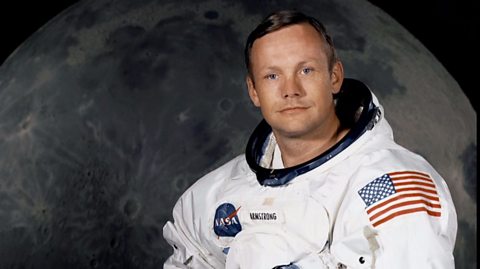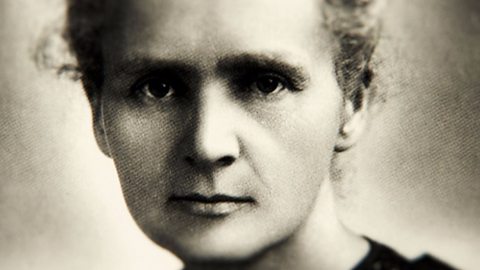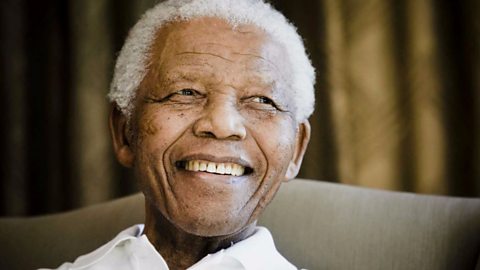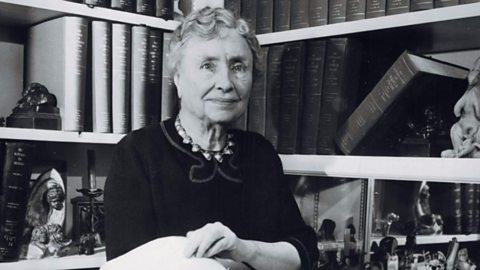SANJEEV BHASKAR: In 1955, segregation had been a fact of life in the southern United States for over a hundred years.
When Rosa Parks was arrested after refusing to give up her seat for a white passenger, the local Black community chose to boycott the bus service. And they knew just who they wanted to lead the campaign.
Martin Luther King Junior was born the son of a Baptist preacher. By the age of six he’d become acutely aware of America’s race problem. Even at school people had begun to notice his public speaking ability.
This is the Holt Street Church on the 5th of December 1955, Doctor Martin Luther King - only in his mid-twenties - had to stand here and address the community. 7,000 people turned up to listen to him speak. It was packed.
But what he came up with was powerful enough that it captured their imagination and energised a community.
ARCHIVE AUDIO OF DR KING: Right here in Montgomery when the history books are written in the future. Somebody will have to say there lived a race of people a Black people. Fleecy locks and black complexion. A people who had the moral courage to stand up for their rights.
SANJEEV BHASKAR: After this, the movement had a leader but it didn’t go unnoticed. The FBI started monitoring him and it also awoke more sinister forces.
ARCHIVE FOOTAGE OF DR KING: I have been threatened many many times. There was a time that we received as many as 30 and 40 threatening calls a day. But something ultimately came to remind me that, that in this struggle because it is basically right, the loneliness and the fear have faded away because of a commitment to a moral idea.
SANJEEV BHASKAR: His family home was bombed while his wife and child slept, and yet he never wavered from a path of non-violent resistance.
What was it that made Dr King choose non-violence?
BRYAN STEVENSON: Dr King and those who had lived through this knew that if they gave away the most precious commodity we had, which was this understanding that justice can prevail, to give that away would be to give away the power and so he said we can’t do that, we can’t be violent, we can’t react to violence with violence, we can’t hate.
SANJEEV BHASKAR: Dr King now organised a march taking a quarter of a million people to the Capitol.
ARCHIVE FOOTAGE OF DR KING: I have a dream. That one day. My poor little children one day will live in a nation where they will not be judged by the colour of their skin but by the content of their character.
SANJEEV BHASKAR: Under his leadership the Civil Rights movement was winning the soul of America. And on the 2nd of July 1964 the Civil Rights Act was signed into law.
The Civil Rights Act ended segregation in public places, banned employment discrimination, and the voting act that followed allowed Black people to exercise their legal right to vote.
But Martin Luther King wasn’t done, he wanted to go even deeper. Now he wanted to get in to the economics of injustice.
He launched what he called the poor people’s campaign. Working on it with him was Wornie Reed.
SANJEEV BHASKAR: Hi, hi.
WORNIE REED: We were demonstrating to open restaurants and so on, and there are restaurants that I can’t afford to go to. So we need to work on economics as well as integration.
SANJEEV BHASKAR: What is the point of being able to sit at a lunch counter…
WORNIE REED … if you can’t pay for the sandwich.
SANJEEV BHASKAR: Right.
WORNIE REED: It was wider than just advocating for African-Americans. It was clearly for all poor people.
SANJEEV BHASKAR: King was demanding that all people should have what they need to live. But the Government saw it as anti-American and when King also campaigned against the Vietnam War, he knew he was putting himself further at risk. On the 4th of April, 1968, Martin Luther King was in Memphis. As he stood on his hotel room balcony he was shot with a bullet from a rifle of a white assassin.
Martin Luther King was an instantly recognisable symbol of human rights, with the strength and charisma that befits a true icon.
Sanjeev Bhaskar explores how Dr Martin Luther King Jr had a dream of an equal America, free from racial discrimination.
Martin Luther King Junior was born on 15 Jan 1929, the son of a Baptist preacher, when segregation was in place in the Southern States of America.
When in 1955 Rosa Parks was arrested after refusing to give up her seat for a white passenger, the local black community chose to boycott the bus service. And they asked King to lead the campaign.
His speech spurned people on to fight segregation but caught the attention of more sinister forces – Dr Martin Luther King Jr’s family received threatening calls and their house was bombed.
Despite the violence he was threatened with, he believed in non-violent resistance and refused to react with hate.
He organised a march to highlight the need for a Civil Rights Act, to end segregation, and some 250,000 people attended. Here he spoke his famous ‘I Have a Dream’ speech which called for racial harmony.
In 1964, he got what he was campaigning for - The Civil Rights Act ended segregation in public places, banned employment discrimination and the voting act that followed allowed Black people to exercise their legal right to vote.
On the 4th of April 1968 Martin Luther King was in Memphis. As he stood on his hotel room balcony he was shot with a bullet from a rifle of a white assassin.
This short film is from the BBC series, Icons.
PLEASE NOTE: This short film contains scenes which some people may find upsetting. Teacher review is recommended prior to use in class.*
Teacher Notes
Key Stage 3 - History
This short film could be used to discuss:
- Key American figures of the 20th century
- The Civil Rights Movement
- The history of activism
- Social history of America in the 1960s
- Race relations in 20th century America
- The Montgomery Bus Boycott
- Dr Martin Luther King's 'I have a dream' speech
- The Civil Rights Act
- Assassinations in America
Curriculum Notes
This short film is suitable for teaching history at KS3 in England, Wales and Northern Ireland and Third and Fourth Level in Scotland.

More from Icons:
Neil Armstrong - First person on the Moon. video
Dermot O’Leary explains how Neil Armstrong flew planes for the US in the Korean war and as a test pilot before he made history as the first person to walk on the Moon’s surface.

Marie Curie - The person who discovered radium and polonium. video
Chris Packham explains how Marie Curie’s discovery of polonium and radium changed atomic theory and how her study of radioactivity helped doctors save thousands of lives.

Nelson Mandela - Freedom fighter and South Africa's first black president. video
Sir Trevor McDonald reports on Nelson Mandela, who went from freedom fighter to become South Africa’s first black president.

Helen Keller - The writer who proved her disability was not debilitating. video
Sanjeev Bhaskar explores the life of Helen Keller, a writer, journalist, activist and ambassador who was deaf and blind but proved her disability was not debilitating.
